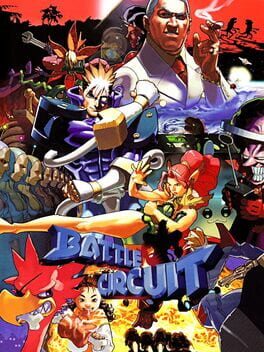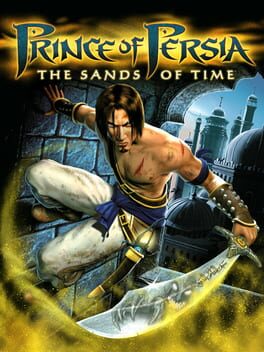qlab
Bio
Nothing here!
Badges

2 Years of Service
Being part of the Backloggd community for 2 years

Liked
Gained 10+ total review likes

Well Written
Gained 10+ likes on a single review

N00b
Played 100+ games
189
Total Games Played
000
Played in 2024
000
Games Backloggd
Recently Reviewed See More
Battle Circuit immediately charms you with its eclectic cast of playable characters, off-beat sense of humour and imaginative scenarios. I had to double check this wasn't based off a pre-existing manga or anime, so well realised was the world. This was Capcom's last beat-em-up for arcades, following up D&D: Chronicles of Mystara (1996), which had taken the genre to its maximalist limit. Battle Circuit does feature a light upgrade system but is otherwise a more back to basics, all-action approach similar to Armored Warriors (1994), demonstrating their skill for aesthetics, spectacle and exciting set pieces. There's a celebratory feel about the game and you definitely get the impression they wanted to go out on top. In terms of gameplay, there's not much else to say, combat is crunchy and satisfying, as had become trademark, with enemies exploding into coins that can later be spent to unlock moves, adding replayability. The game is also surprisingly fair and not too hard. Capcom would eventually dip their toes back into the genre with Beat Down: Fists of Vengeance (2005) for PS2, an admirable 3D effort, and of course their lineage continues to show in the likes of Devil May Cry 5.
The blueprint for what 3D platforming would eventually become, aka the ‘Uncharted’ action adventure game. Back in 2003 this was a really big deal, at least for those who played it and for the industry at large. It was a very different kind of 3D traversal. Unlike Mario 64 or Tomb Raider, the skillset of the Prince was a lot more contextual. This is demonstrated super early on with a huge set piece of the Prince infiltrating a palace under siege. We now know this as the boring bombastic intro before the real game starts, but again, at the time this was genuinely revolutionary. Bridges crumble under you at the most opportune time as you leap across to the other side, the camera switching to a dramatic dutch angle. Truly filmic, no but really, this was the most successful attempt at ‘playing a movie’ since Metal Gear Solid. If you tried that same leap without a gap to jump over the Prince would simply roll on the floor. As a 10 year old I was dumbstruck by this, but now I can understand this was a game about authoring moments, the hand of the developer was being felt outside of cutscenes for the first time. Obviously the DNA of this idea is deeply ingrained in so many games today. Every protruding ledge, marked wall, collapsing bridge that you find in every third person action game came from Sands of Time.
It’s common knowledge that despite great reviews it underperformed in sales (which resulted in the Warrior Within tonal 180), but developers definitely took notice and it wasn’t long before everyone copied it, for example the Tomb Raider Legend reboot from Crystal Dynamics was a straight rip. But really it was Uncharted (2) that truly popularised this style, evolving the traversal into being almost completely automated and entirely in service of the spectacle.
But that’s not to say that this is one of formative-but-unplayable kind of games. Despite some scripted aspects the platforming is a lot more skill-based and fun than anything in Uncharted. The developers had a big legacy to live up to after all, so you get a lot timed puzzles and deadly traps and the like. The storytelling is also extremely elegant with just two main characters, Prince and his love interest/companion Farah. This again is very Naughty Dog, with exposition and character moments being delivered organically during gameplay rather than constant cutscenes. The Prince also acts as a narrator too, telling his story from some point in the future. All of this made for a very dynamic, fresh and gripping experience. There’s a restraint and sophistication to everything. As a kid I was enthralled, as an adult it still holds up, both as a game and as an inspiring example of a team firing on all cylinders. The only real negative is the combat, which is too frequent and too repetitive. That said it’s worth persevering. A true classic in my opinion! ⭐️
It’s common knowledge that despite great reviews it underperformed in sales (which resulted in the Warrior Within tonal 180), but developers definitely took notice and it wasn’t long before everyone copied it, for example the Tomb Raider Legend reboot from Crystal Dynamics was a straight rip. But really it was Uncharted (2) that truly popularised this style, evolving the traversal into being almost completely automated and entirely in service of the spectacle.
But that’s not to say that this is one of formative-but-unplayable kind of games. Despite some scripted aspects the platforming is a lot more skill-based and fun than anything in Uncharted. The developers had a big legacy to live up to after all, so you get a lot timed puzzles and deadly traps and the like. The storytelling is also extremely elegant with just two main characters, Prince and his love interest/companion Farah. This again is very Naughty Dog, with exposition and character moments being delivered organically during gameplay rather than constant cutscenes. The Prince also acts as a narrator too, telling his story from some point in the future. All of this made for a very dynamic, fresh and gripping experience. There’s a restraint and sophistication to everything. As a kid I was enthralled, as an adult it still holds up, both as a game and as an inspiring example of a team firing on all cylinders. The only real negative is the combat, which is too frequent and too repetitive. That said it’s worth persevering. A true classic in my opinion! ⭐️

